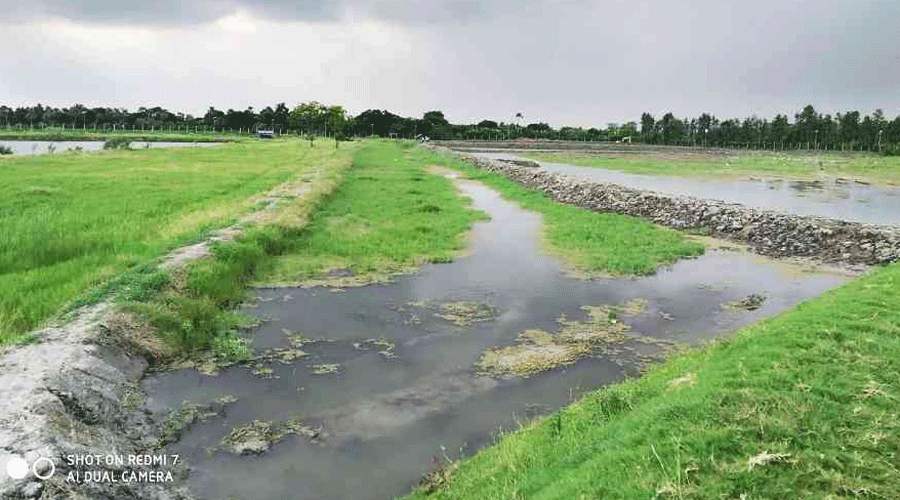The city suffered a 5 per cent drop in the area of water bodies from 2000 to 2015, a working paper by the non-profit World Resource Institute (WRI) India says.
The paper, published in December, was prepared based on satellite images available from the European Commission’s Joint Research Centre.
“Blue (water body) cover decreased by 5% in Kolkata in the 0-50km region between 2000-2015,” the report says. An author of the paper said they noticed a significant shrinkage in water bodies in southeast Kolkata and its outskirts during the 15 years.
Southeast Kolkata and its outskirts, which covers areas along EM Bypass, are undergoing rapid urbanisation. Many houses and large housing complexes have come up on what were vacant plots a couple of decades back.
The team that put together the paper studied images of places that are within 50km of the city centre, meaning it throws light on places such as Baruipur, Sonapur and Kalyani. The study also noticed there has been an increase — from 6 to 9 per cent — in the built-up area in the East Kolkata Wetlands during the same period — 2000 to 2015.
“Rapid urbanisation in India has been characterised by the growth of concretised and impermeable landscapes over agricultural lands and natural spaces such as woodlands, lakes, rivers, and wetlands,” the report says.
Samrat Basak, director of urban water resilience at WRI India and an author of the report, said images of all seasons of each of the 15 years were studied to arrive at the conclusion.
Sahana Goswami, lead author of the report and senior programme manager at WRI India, said they used satellite images and remote sensing data to write the paper.
The findings on Kolkata were part of a 10-city study to see the links between growth in urbanisation and its relation with natural infrastructure. The other cities that were studied are Ahmedabad, Bengaluru, Chennai, Delhi, Hyderabad, Jaipur, Mumbai, Pune and Surat.
Arjan Basu Roy, a naturalist in Kolkata, said lived experiences of most Kolkatans echo the report.
“A visit to places outside the area under the Kolkata Municipal Corporation (KMC) will show that the situation is worse there. This is not to say that things are very good in the KMC area either. There is rampant conversion of water bodies and there is no one to prevent this. Politicians, builders and administration are in an unholy nexus,” he said.
Highlighting the collective apathy towards natural resources, Basu Roy cited the steady shrinking of Bikramgarh Jheel, to the south of South City.
The results are for everyone to see, said a resident of a neighbourhood along the Bypass.
“Water bodies act as natural basins for rainwater and prevent flooding. Pockets along the Bypass are now frequently flooded.”
